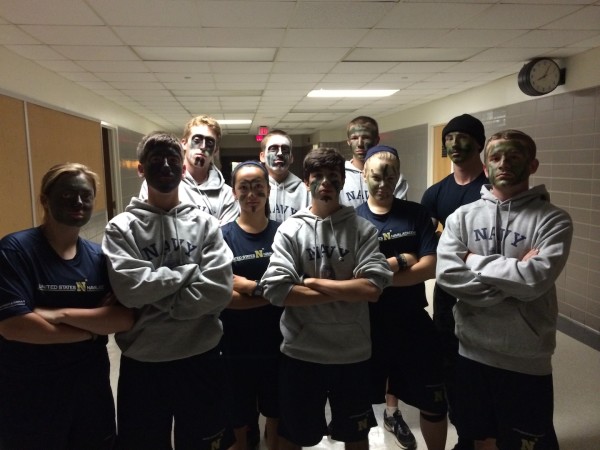Aye, Aye, Captain
One of the great opportunities in the United States is the ability to choose to serve in our nation’s armed forces. Whether it is the Army, Navy, Air Force, or Coast Guard, the choice belongs to all no matter that person’s life situation. For me, my future goal is to serve in the nation’s Naval Forces.
The two most common routes when joining the Navy are enlisting right out of high school or attending the United States Naval Academy.
The main difference between enlisting and attending the Academy is that you get a college education from the Naval Academy whereas when enlisting, you don’t. Throughout midshipmen’s time at the Academy, they are paid a monthly stipend of spending money that increases each year. At the end of their four years, graduates are presented with a Bachelor of Science and a degree for their choice of majors and minors. Graduates, now real officers in the Navy, are given a much higher starting salary when they go into their active duty.
Now all this sounds amazing right? But it doesn’t come without a challenge. Upon being accepted to the Naval Academy, midshipmen will arrive at the campus the July before the academic year commences to begin Plebe Summer, a six-week “fun”-packed summer where Plebes (freshmen) are to be broken down as civilians and rebuilt as proper Midshipmen. The training is tests physical strength as well as mental strength and is the most intense part of the freshmen year– before academics start, of course.
Now even those – including myself- who are so keen and set on attending the Naval Academy have many questions regarding life at the Academy, and that is why the Admissions of the Academy created “the program.”
Last week I was given a very exclusive opportunity to visit the institution to attend their Summer Seminar program. Out of the over 8,000 applicants, I was one of the 2,600 who were accepted.
The objective of Summer Seminar is to offer interested students the highlights of what the Naval Academy is all about and what it has to offer, and after attending I can easily say that it truly helps to give a good idea of what you are getting yourself into.
The first day I arrived, my life was put in the hands of the newly turned 3rd/Class Midshipmen (sophomores) and I was structurally placed in a company, platoon, and squad; Delta 3-2, OORAH. From that point on it was a blur of being handed things, given fast-paced directions, and hurried off to my dorm room to drop my belongings and get settled for the hectic week that– I had not yet known– was in store for me.
After meeting my squad and the whole entire company of 200 other guys and gals, we were sent off to bed, only to be woken up by our shouting squad leader at 5:30 in the morning. Each morning we were woken up for intense P.T easier known as Physical Training. They called it PEP for some unknown reason, and it was for sure not because everyone was happy to be doing 100 pushups, sit-ups, and other core-workouts each morning. Later in the week we went to academic classes we individually chose in our application to the program.
On the final day, we all said our goodbyes to the friends we had made and the brother/sister-like relationships we had formed (which in reality meant we were getting everyone’s social media and/or contact information). Summer Seminar was a great program that really did show me what life was like at the Academy.
To all the underclassmen who still have a decent amount of time to decide their post-high school plans, if it’s the Navy you want to join, consider checking out the Academy as a route.
Don’t just hear it from me though. After speaking with freshman David Cable, he said, “The Naval Academy is a wonderful institution. I really want to go there because I’d be able to serve my country as an educated officer, follow in my father’s path as he himself graduated in the ‘80s, and hopefully wrestle on the team. I can’t wait until I can apply for Summer Seminar to really see what it’s about.”
One of the most challenging things revolving around attending the Naval Academy is actually getting accepted. According to last year’s numbers, 23,000 high school students applied, and only approximately 1,200 were accepted. The application process is one of the most competitive in the nation, and it is the most difficult of all the military academies. When applying, one must be very dedicated and hard working and I can support that claim for I am right smack in the middle of it! I hope in the end I will be able to say, “I made it.”
To wrap up, the United States Naval Academy is an incredible place, but the real message out of anything to take away from what I’ve told you is that there is another way to serve in our nation’s Naval forces while still being able to attain a genuinely unique higher learning experience.

Alex is a junior at who lives in a hood of Southampton better known as Tuckahoe. He enjoys running for his school Cross-Country and Track teams and is...







